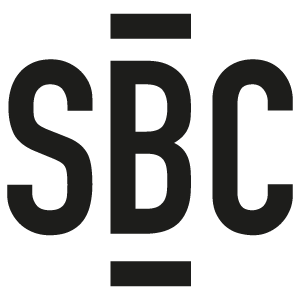The background
For software as a service (SaaS) providers, marketing is key.
Marketing brings in new customers. It builds brand awareness. It turns your prospects into leads and – ta-da! – leads into new users.
Yet marketing also keeps existing users. It makes them feel part of a big picture. It shows them that they made the right choice. It helps keep your business fresh and alive.
And what perches at the top of effective SaaS marketing material? Case studies.
Helping shed light on HubSpot’s customer success stories
The background
For software as a service (SaaS) providers, marketing is key.
Marketing brings in new customers. It builds brand awareness. It turns your prospects into leads and – ta-da! – leads into new users.
Yet marketing also keeps existing users. It makes them feel part of a big picture. It shows them that they made the right choice. It helps keep your business fresh and alive.
And what perches at the top of effective SaaS marketing material? Case studies.
The four habits
of highly successful
case studies
We could write ten books on why case studies work so well. But, well, we both probably don’t have the time for that. Instead, here are four reasons that leap out.
The brief
Could we produce a batch of case studies for market leader HubSpot: something to highlight their partnership with brands across Europe and the US to engage, inform – and ultimately convert – readers?

What we did
After crafting our question guides, we went out and spoke to the users of the software. Typically, these were high-level marketing and sales teams and executives of companies. These people took us through their experiences. What wasn’t working before. Why they started using the software. How it helped their teams and business run better. What lies ahead.
It’s a simple yet effective approach: problem, solution, resolution. (Case studies that hit the mark often mimic the powerful three-act structure of summer blockbusters). After absorbing users’ journeys, we wrote them up. Understanding how people read means we:
- chunked the information under magnetic headings
- trimmed excess information
- bumped up the readability levels, and
- kept the material crisp, clear, and functional – yet still thorough.
For some of the case studies, we also wrote scripts – then turned those scripts into short films. We appreciate the power of images, not just words, and are dab hands at seeing the process through from pre-production and filming to post-production.
A selection of clips from the videos we created
Case Studies// Copywriting // Scripting // Video production
Why it worked
Our experience
Our experience of writing lots of case studies over the years meant that the client felt in safe hands throughout.
We brought our strategic thinking skills to the table: boiling down often technically dense material into something neat and digestible.
But we also enjoy giving our more pragmatic sides a workout: making sure everything was delivered on time and on budget. (Call us masochists, but we love sticking to tight deadlines.)
Words backed by science
When writing case studies – indeed, when writing almost anything – we always consider behavioural and brain science effects.
As such, nearly all of our work contains strong fluency effects and narrative effects. We injected these case studies with lots of social proof. We neatly addressed issues related to the certainty effect and analysis paralysis. We even sprinkled in elements of prospect theory. Including such insights means we can be sure of the impact the case studies had.
We love the work
We might have to slap our backs for a short paragraph or two.
See, we just really like doing this kind of thing. Learning about esoteric or new subjects, following a customer’s journey, then passing that knowledge on.
And if you love the work, it’s apparent. In fact, studies have shown that the more you like doing something, the more productive you are at it.
Our experience
Our experience of writing lots of case studies over the years meant that the client felt in safe hands throughout.
We brought our strategic thinking skills to the table: boiling down often technically dense material into something neat and digestible.
But we also enjoy giving our more pragmatic sides a workout: making sure everything was delivered on time and on budget. (Call us masochists, but we love sticking to tight deadlines.)
Words backed by science
When writing case studies – indeed, when writing almost anything – we always consider behavioural and brain science effects.
As such, nearly all of our work contains strong fluency effects and narrative effects. We injected these case studies with lots of social proof. We neatly addressed issues related to the certainty effect and analysis paralysis. We even sprinkled in elements of prospect theory. Including such insights means we can be sure of the impact the case studies had.
We love the work
We might have to slap our backs for a short paragraph or two.
See, we just really like doing this kind of thing. Learning about esoteric or new subjects, following a customer’s journey, then passing that knowledge on.
And if you love the work, it’s apparent. In fact, studies have shown that the more you like doing something, the more productive you are at it.
The Outcome
All of this means that when tasked with writing a batch of case studies we get them in on time, every time. Not only that, but we’re confident that by using behavioural effects they’re always highly fluent, grab people’s attention, and have oodles of utility.
Want to know more about the power of case studies and other comms? We can help. We’ve got decades of experience and can craft all manner of campaigns – from planning and production, to going live (and beyond).

